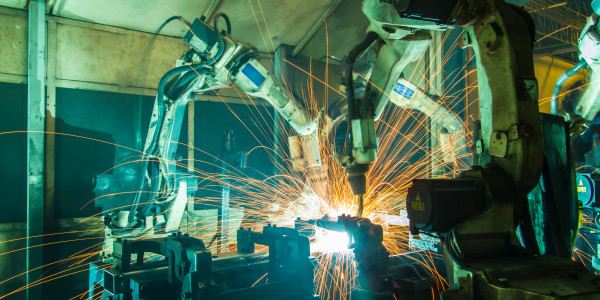Industrial robots play a vital role in manufacturing. They’re powerful, precise, efficient, and they can handle heavy workloads with minimal downtime. Despite their importance to industry factory robots have room for improvement, though. These robots are typically large, immobile, expensive, and too dangerous to deploy in the vicinity of human workers. Researchers in the robotics industry recognize these weaknesses, however, and the race is on for safer, more versatile, and more affordable factory robots.
IEEE Spectrum reported on a new type of factory robot that could give a glimpse at the future of robotic arms.
Franka Emika
Franka Emika is a German robotics startup based in Munich. They’re currently developing a robotic arm, also called Franka Emika, that could help change what we know about factory robots.
Like other cobots – or collaborative robots – the Franka robotic arm is an attempt to bridge the gap between human workers and machines. While this type of robot won’t replace factory robots in the immediate future, they provide vital data and help pave the way to eliminate the current disadvantages of industrial robots.
Easy to program
Franka claims that the robot is good to go out-of-the-box with “visually intuitive programming”. Eliminating difficult set-up would be a game changer for manufacturers.
Franka also works via browser, meaning that it can be controlled from different devices. A cloud-based robot lends itself to big data and Industry 4.0.
Safe
Safety remains one of the biggest obstacles for factory robots. Machines requiring safety barriers to protect employees are standard, but an obvious hurdle for optimizing machine-worker interaction. Franka shows off impressive sensor technology in the video above by contacting a delicate latex balloon without popping it.
Maintaining human safety is a top priority for robots, and Franka appears to be handling that challenge quite well.
Capable
Factory robots need to be safe, and it’s beneficial if they’re easy to install, but they have to fulfill their primary function. Factory robots must improve the manufacturing process. Franka is fast, and moves like a factory robot.
Franka has a 3-kilogram payload – meaning that it can’t lift car parts – but the robotic arm can carry out a number of tasks that have previously been difficult to automate such as drilling, screwing, and other assembly tasks.
Franka builds itself
One of the coolest features of the Franka robotic arm is its ability to self-replicate. According to the company, Franka is the first factory robot able to build itself.
Franka can currently do 80% of the work in assembling other Franka arms, but the company has 100% in its sights.
Franka isn’t the first company – and won’t be the last – developing cobots. It will be interesting to see how this technology contributes to factory robots in the future. Until then, make sure that your factory machinery is working like it should. Contact us today for Indramat motion control system service, repair, or maintenance.
